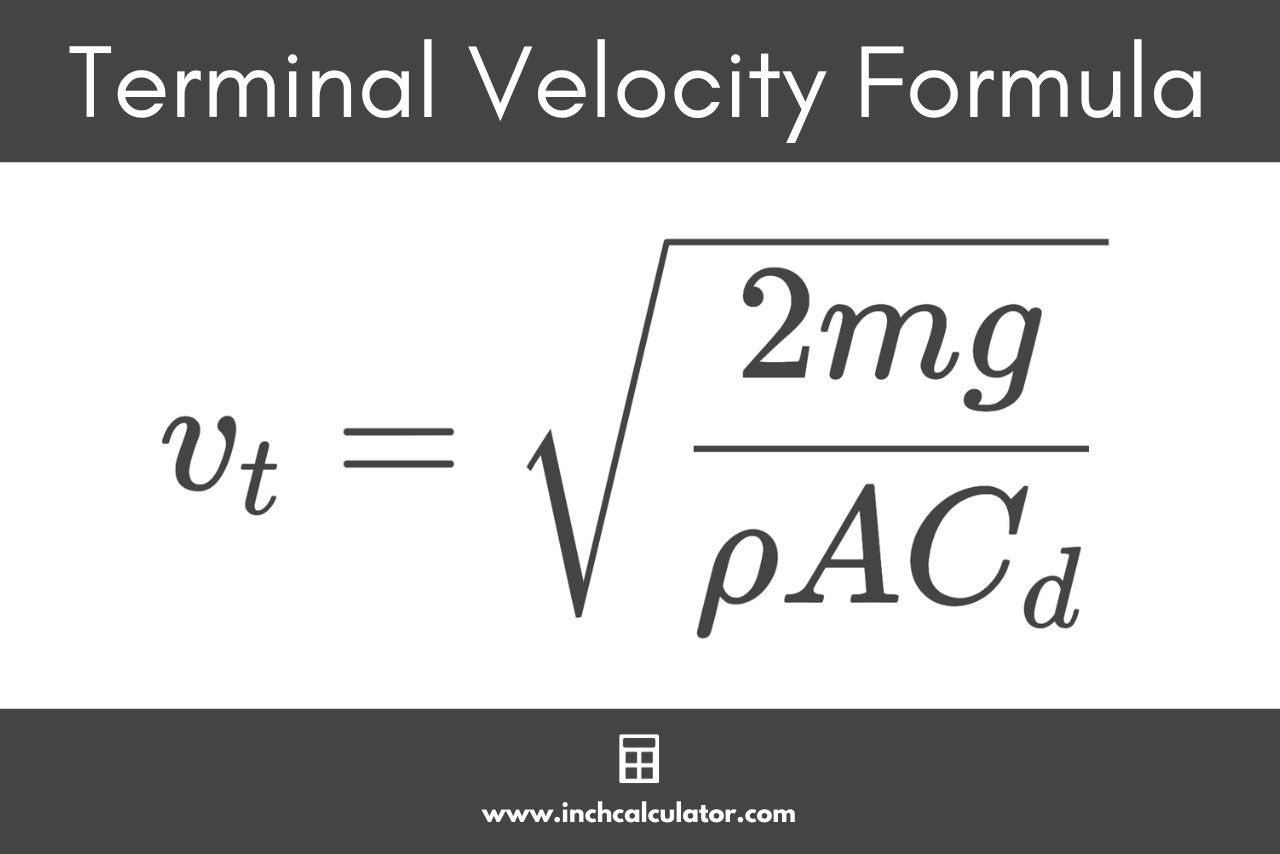Terminal Velocity Calculator
Use our terminal velocity calculator to find the terminal velocity of a falling object.
Terminal Velocity:
Terminal Velocity Formula
On this page:
How to Calculate Terminal Velocity
Terminal velocity is the highest velocity attainable by an object as it falls through a fluid (air, water, etc.). It occurs when the downward force of gravity (Fg) equals the upward force of drag (Fd).
This results in a net force of zero, causing the object to cease accelerating and maintain a constant velocity.
Several factors contribute to an object’s terminal velocity, including its mass, its cross-sectional area, its drag coefficient, and the density of the fluid through which it is falling.
Terminal Velocity Equation
The formula for terminal velocity vt can be expressed as:
Where:
m = mass of the falling object
g = acceleration due to gravity
ρ = fluid density
Cd = drag coefficient
A = cross-sectional area of the object
The terminal velocity formula states that the terminal velocity of a falling object vt is equal to the square root of 2 times the object’s mass m times the gravitational acceleration g divided by the fluid density ρ times the object’s drag coefficient Cd times the object’s cross-sectional area A.

Derivation of the Terminal Velocity Formula
The derivation of the terminal velocity formula begins with Newton’s second law of motion, which states that the net force acting on an object is equal to the mass of the object multiplied by its acceleration (F = ma).
For an object falling through a fluid, two primary forces act: gravitational force (Fg) and drag force (Fd). The gravitational force is given by:
The drag force can be described by the formula:
At terminal velocity, the acceleration of the object is zero because the net force is zero. Thus, setting Fg = Fd:
Solving for vt gives us:
For example, let’s consider a scenario where we need to calculate the terminal velocity of a skydiver.
Let’s assume the skydiver’s mass is 80 kg, the drag coefficient is 1.0 (body in freefall position), the cross-sectional area is 0.7 m², and the air density at the altitude of the jump is approximately 1.2 kg/m³. The acceleration due to gravity is about 9.81 m/s².
So, the terminal velocity of the skydiver in this example is about 43.2 meters per second.

